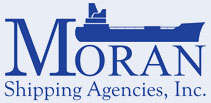 News & Media
News & Media
Are Euro problems becoming urs?
As the debate rages amongst economists on the impact Euro woes and China’s stimulus plan will have on the United States trade picture, April’s maritime commerce picture did not bode well. In fact, it was the antithesis of March’s stellar performance in nearly every sense. Thus, as the Day of Fools gave way to May Day every port in Texas was below March’s vessel arrival account. Whether this was a premature breathing spell or the end of the post-Great Recession “recovery” remains to be seen; however, it certainly reflects a change in demand.
This month’s winner was the Port of Texas City which saw its total arrival numbers drop by 1 over the last month. With a 125 vessel arrivals in April, the port remains 9% above last year’s running total. At the opposite end of the spectrum were the ports of Brownsville and Sabine. These two ports located at opposite ends of the state were off 29% and 20% respectively. The one major difference between the two - other than geography – is the fact that while Sabine is off 2% from its 2011 year-to-date numbers, Brownsville is up a sizzling 44%. Working north from the border port, Corpus Christi saw 14%fewer vessel arrivals, Freeport dropped 19%, Galveston decreased by 7.5% and Houston’s monthly arrivals was off by 9%.
Yet, the Port of Houston still handled 711 deepdraft vessels – an impressive monthly number in its own right. The interesting piece of the Houston commerce puzzle is the composition of the vessels that discharged or loaded cargoes. On the one hand, tank vessels carrying oil declined by nearly 17% - due to shale gas production streams and waning demand – and on the other hand chemical tankers continued to surge with a 6% monthly rise resulting in a positive 44% year-to-date difference. Bulk cargoes were rather solid with a 3% gain but this was more than offset with a greater than 19% fall in general cargo vessel movements. Container vessels slackened by 6.6%; reflecting a softening in containerized good demand but LPG vessel arrivals continued its upward trend with its largest monthly gain of the year – 22% . Finally, the car carrier numbers were flat as compared to March (12 versus 13) but this category is up 21% for the year conveying a healthy demand for automobiles throughout the region. Last but not least, barges from sea plummeted 29% and inland tow movements throughout the Houston Ship Channel sank 2.5% during April.
All things being equal, the monthly negatives eclipsed the positives by enough of a margin to indicate that April may be more than an aberration. In fact, if the currency sniffles in Europe progress to a full blown cold it is anticipated that chemical and distillate exports may also wane due to reduced demand from afar. Granted, underlying all of this maritime transportation data is the true health of the U.S. economy and its ability to weather a trough of weak demand. That being said, it appears that the “experts” are already prepared to pare back their modestly positive predictions as the breezes of optimism are replaced by yet another round of doldrums.
Thomas P. Marian
Buffalo Marine Service, Inc.
www.BuffaloMarine.com
"Leading the way and dedicated to exceeding expectations."
June, 2012



